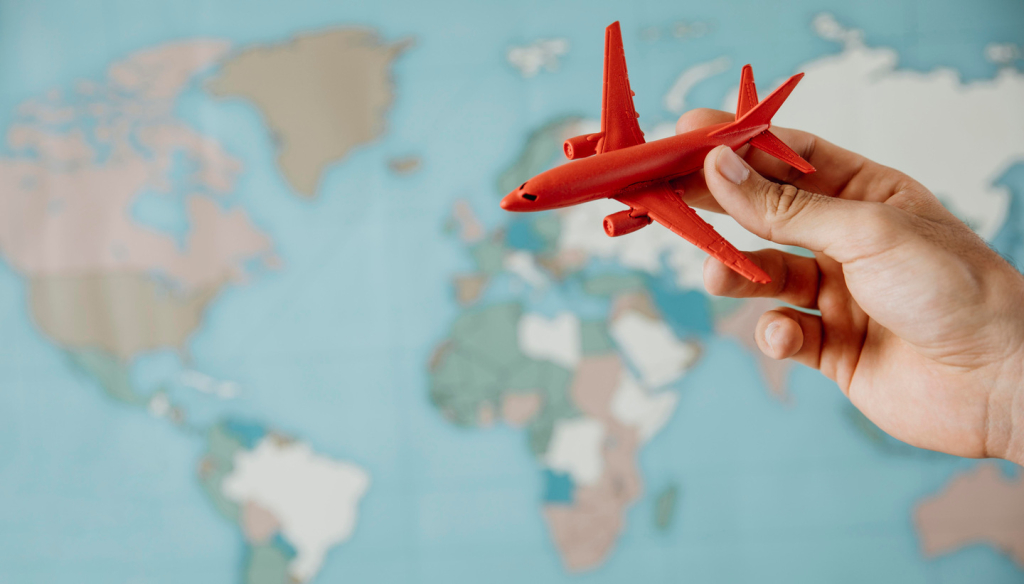Introduction
The Philippines, known for its stunning beaches and vibrant culture, has always been a popular tourist destination. However, with the onset of the COVID-19 pandemic, the country’s air travel industry came to a grinding halt.
Domestic flights were grounded, and the once bustling airports stood empty. But as the world gradually recovers from the pandemic, there is hope on the horizon for the re-emergence of foreign air travel in Philippine skies in 2024.

Major commercial airlines operating in the Philippines
Before the pandemic, the Philippines had a robust foreign air travel market, with several major commercial airlines operating there. These included flag carrier Philippine Airlines, crucial in connecting the Philippines to international destinations. Other notable airlines were Cebu Pacific Air, AirAsia Philippines, and PAL Express.
The flag carrier Philippine Airlines has long been a critical player in the foreign air travel market. With its extensive network of international routes, PAL has been instrumental in promoting tourism and facilitating business travel to and from the Philippines. The airline has a strong reputation for its excellent service and commitment to passenger safety.
The competition between foreign carriers and domestic airlines on international routes
The foreign air travel market in the Philippines is set to witness a significant shift in dynamics in the coming years. With the recovery period from the pandemic underway, airlines worldwide are expanding their operations to capture the growing demand for international travel and the volume of expected travelers. This development has increased competition between foreign carriers and domestic airlines on international routes.
Other local operators, such as the Gokongwei-led Cebu Pacific, have expanded their international operations. These airlines have been investing in new planes and expanding their fleet to cater to the increasing demand for international flights.
As a result, passengers now have a wider choice of airlines and destinations, leading to a more competitive market.
The re-emergence of the foreign air travel market: Philippines
As the world gradually recovers from the impact of the COVID-19 pandemic, there is hope for the re-emergence of foreign air travel in Philippine skies in 2024. In collaboration with the Civil Aeronautics Board (CAB), the Philippine government is working towards the safe resumption of international flights.
Reopening the Ninoy Aquino International Airport (NAIA) for international travel is a significant step towards revitalizing the foreign air travel market.
The majority of foreign carriers are also showing interest in resuming international flights to the Philippines. Royal Air Philippines, a local page, has expressed plans to expand its international routes. Additionally, foreign carriers such as Qatar Airways, Emirates, and Singapore Airlines intend to resume flights to the Philippines once travel restrictions are lifted. Most of these foreign carriers ferried international travelers to the country but had to slow down during the global health crisis.
The importance of the international air travel market for the Philippine economy
The international air travel market plays a crucial role in the growth and development of the Philippine economy. Tourism is one of the significant contributors to the country’s GDP, and foreign air travel is an essential component of the tourism industry. With the re-emergence of foreign air travel in Philippine skies, the government is expected to attract many international travelers, increasing tourism revenue.
The government also plays a significant role in supporting the growth of the international air travel market. The Department of Tourism, in collaboration with airlines and other stakeholders, promotes the Philippines as a tourist destination and facilitates the entry of foreign carriers into the country.
These efforts have resulted in a significant increase in the number of flights and destinations available to travelers.
The role of the Civil Aeronautics Board in regulating international passenger traffic
The Civil Aeronautics Board (CAB) is crucial in regulating international passenger traffic in the Philippines. As the country’s primary regulatory body for air transportation, the CAB ensures that foreign carriers comply with the requirements and standards set by the government. This includes obtaining the appropriate permits and licenses to operate in the Philippine skies.
One of the primary responsibilities of the CAB is to determine the allocation of traffic rights among foreign airlines. These traffic rights specify the number of flights and destinations each foreign carrier can operate in the country. The CAB carefully evaluates the applications from foreign airlines to ensure fair competition and maximize the benefits for both the airlines and the Filipino travelers.
The entry of new players in the foreign air travel market
In the past domestic airlines accounted for the most number of flights. However, the foreign air travel market in the Philippines is witnessing the entry of new players, one notable example being Royal Air Philippines. This airline aims to capture a significant market share by offering competitive fares, excellent service, and a modern fleet of planes. The entry of Royal Air Philippines has further intensified the competition among foreign carriers and domestic airlines on international routes.
Royal Air Philippines plans to operate flights to key destinations in Southeast Asia and China, capitalizing on the growing demand for travel between these countries and the Philippines. With its expanding fleet and strategic partnerships with other airlines, Royal Air Philippines is poised to become a significant player in the Philippines’ foreign air travel market.
The impact of the re-emergence of foreign air travel on domestic travel in the Philippines
The re-emergence of foreign air travel in the Philippines will profoundly impact domestic travel. As international tourists start returning to the country, trend shows that there is an expected surge in demand for domestic flights, not just in Manila, but especially to popular tourist destinations. The influx of foreign travelers and guests to our country will benefit the airline industry and re-emergence, such as tourism and transportation.
According to data from the re-emergence of Tourism, the Philippines received the most foreign tourists from countries in Asia before the pandemic. With the expected recovery of the foreign air travel market, the government can attract more international tourists again and maintain growth momentum.
This, in turn, will boost the demand for domestic flights as travelers explore different regions within the Philippines.
Conclusion
The COVID-19 pandemic has severely impacted the foreign air travel market in the Philippines. However, with the collective efforts of the government, airlines, and other stakeholders, there is hope for the re-emergence of foreign air travel in Philippine skies in 2024.
The revival of the international air travel market will stimulate the airline industry and contribute to the country’s economic recovery. As travel restrictions ease and borders reopen, the Philippines is poised to welcome back foreign tourists and reconnect with the rest of the world.
As the foreign air travel market in the Philippines pre-emerges and reemerges, stay updated with the latest travel advisories and guidelines. Plan your next trip to the Philippines and explore this country’s beautiful destinations.

Celebrate Life’s Milestones in Camella!
Make unforgettable memories in a Camella home.
Our communities are designed to elevate your living experience.


